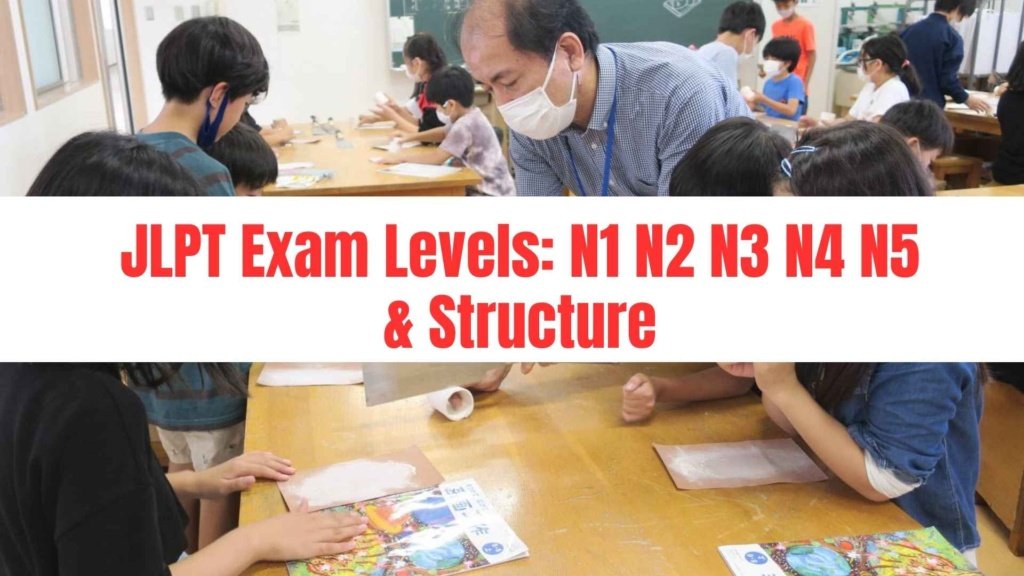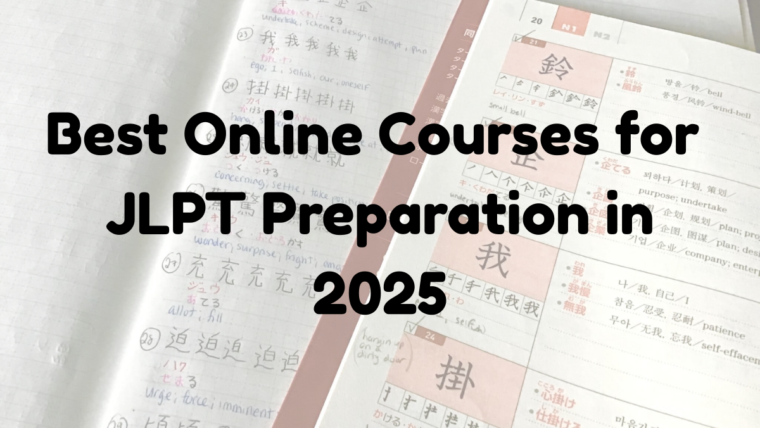Learning Japanese opens doors to education, career growth, and cultural exchange — but proving your proficiency is just as important. The Japanese Language Proficiency Test (JLPT) is the most recognized credential for non-native speakers. Whether you’re preparing for everyday communication, university admission, or landing a job in Japan, understanding the JLPT Exam Format & Structure is essential for effective preparation.
The JLPT assesses practical Japanese ability across five levels — N1, N2, N3, N4, and N5 — and evaluates your skills in reading, listening, vocabulary, and grammar. Each level follows a distinct exam pattern with defined durations, scoring criteria, and section weights. By familiarizing yourself with the test’s structure, you can focus on the areas that matter most and plan your study schedule strategically.
In this detailed guide, TLS – The Japanese Language School (+91 8700956038) explains the complete JLPT exam format, from question types to scoring systems, while sharing insider tips and preparation strategies to help you achieve your target level confidently. Click now
JLPT Exam Levels: N1 N2 N3 N4 N5 & Structure
Here is a breakdown of exam structure by level: what sections each level has, how long each section lasts, and other features. JLPT Exam Levels Explained (N5 to N1)

| Level | Sections (Language Knowledge / Reading / Listening) | Time for each section | Total Duration* |
| N1 | Language Knowledge (Vocabulary & Grammar) + Reading combined; Listening separate | Vocabulary/Grammar + Reading: 110 min; Listening: 55 min | 165 minutes |
| N2 | Same pattern as N1: combined Language Knowledge (Vocabulary & Grammar) + Reading; Listening separate | Language Knowledge + Reading: 105 min; Listening: 50 min | 155 minutes |
| N3 | Language Knowledge (Vocabulary) separate; Language Knowledge (Grammar) + Reading combined; Listening separate | Vocab: ~30 min; Grammar + Reading: ~70 min; Listening: ~40 min | 140 minutes |
| N4 | Language Knowledge (Vocabulary) separate; Grammar + Reading combined; Listening separate | Vocab: ~25 min; Grammar + Reading: ~55 min; Listening: ~35 min | 115 minutes |
| N5 | Same split: Vocab separate; Grammar + Reading combined; Listening separate | Vocab: ~20 min; Grammar + Reading: ~40 min; Listening: ~30 min | 90 minutes |
Total duration refers to active testing time; does not include check-in, instructions, breaks, etc.
Sections in Detail: Listening, Reading, Grammar & Vocabulary
The JLPT tests four core skills: Listening for comprehension, Reading for text understanding, and Grammar & Vocabulary for accurate language use across real-life and academic contexts.

1. Language Knowledge (Vocabulary & Grammar)
Assesses understanding of Japanese vocabulary and grammar, measuring accuracy, usage, and comprehension in varied contexts.
- Vocabulary: Kanji, compounds, reading pronunciations, choosing the correct word in context, paraphrases.
- Grammar: Picking correct grammar forms, sentence composition, context usage, particles, verb forms. In N3 and above, grammar gets more subtle.
2. Reading
Evaluates comprehension of Japanese texts, passages, and contextual understanding.
- Short passages → questions about meaning, information retrieval.
- Mid-size passages and long passages (depending on level): more complex texts, perhaps editorials or logical arguments for N1/N2.
- Reading questions often interleaved with grammar in the combined section for certain levels.
3. Listening
Measures understanding of spoken Japanese conversations, instructions, and everyday contexts.
- Tasks may include understanding key points, general outline, comprehension of conversations.
- As level increases, listening becomes more natural, faster, with less redundant repetition. Also more distractors.
JLPT Exam Duration & Pattern by Level
Here’s a summary of JLPT exam pattern (how many sections, how they are combined), and duration level-wise: JLPT December 2025 Online Registration
- N5 : 3 sections (Vocabulary; Grammar+Reading; Listening) — ~90 min
- N4 : 3 sections — ~115 min
- N3 : 3 sections — ~140 min
- N2 : 2 scoring sections (combined Vocabulary/Grammar/Reading; Listening) — ~155 min
- N1 : 2 scoring sections — ~165 min
Scoring System: How is the JLPT Scored?
Scoring is based on scaled scores. You get both:
- Total score
- Sectional scores (each required minimum)
Here are the details:
| Level | Total Possible Score | Sections Scored Separately | Overall Pass Mark | Minimum Sectional Pass Marks* |
| N1 | 180 | Language Knowledge (Vocabulary/Grammar): 0-60; Reading: 0-60; Listening: 0-60 | 100 points | Each section: at least 19 points |
| N2 | 180 | Same as N1 | 90 points | 19 in each section |
| N3 | 180 | Language Knowledge (Vocab/Grammar) & Reading & Listening | 95 points | 19 per section |
| N4 | 180 | Language Knowledge + Reading combined; Listening separate | 90 points | Combined section: at least 38; Listening: 19 |
| N5 | 180 | Same structure as N4 | 80 points | Combined section: 38; Listening: 19 |
If you fail to meet either the overall pass mark or the minimum in any scoring section, you will not pass.
JLPT: Paper-Based or Online?
One common question is whether there’s an online test format. JLPT N1 vs N2 2025
- Currently, the JLPT is paper-based only. There is no fully online proctored version recognized by the official JLPT body.
- Tests are held in test centers around the world. Locations vary depending on country; some centers offer both July & December sessions, some offer just one.
Syllabus & Topics Covered
The “syllabus” isn’t published as a rigid curriculum, but there are well-defined types of items and competence levels. You are expected to know: Kanji
- Basic vocabulary and kanji (more and more as level increases)
- Grammar structures appropriate to each level (particles, conjugations, honorifics especially in N2/N1)
- Reading comprehension: everyday passages at lower levels, more complex written materials at higher levels (essays, editorials, arguments)
- Listening comprehension of conversations, announcements, spoken passages with natural speed, possibly with background noise or multiple speakers at higher levels.
JLPT Test Tips & Strategy
Understanding format & structure is one thing; succeeding is another. Here are strategies: JLPT Japanese Test
- Mock Tests Under Real Conditions
Use past papers or official practice sets. Time yourself strictly according to the sections. It builds stamina and awareness of time constraints, especially reading & listening. - Strengthen Weak Sections First
Many test-takers are strong in vocab but weak in listening or reading speed. Identifying weak spots early lets you allocate time smartly. - Vocabulary & Kanji Regular Practice
The vocabulary load increases steeply from N4 to N1. Daily kanji learning, flashcards, reading Japanese texts helps. - Grammar + Usage in Context
Don’t just memorize grammar points—practice using them in sentences, in reading passages. Recognize them when listening as well. - Listening Skill: Exposure to Native Speed
Use Japanese audio (news, podcasts, dramas) so that you can pick up spoken grammar & vocabulary in natural contexts. Practice with JLPT-style listening tasks. - Reading Practice at Different Levels
For N1/N2, you’ll face longer passages and inference questions. Practice with opinion essays, editorials, etc. For lower levels, focus on comprehension and speed. - Time Management
Since sections have fixed times, ensure you pace so you don’t run out of time in reading or listening. Skip questions that are too hard and return later if time remains. - Learn Test Pattern and Question Types
Familiarize yourself with how questions are asked (multiple choice, fill in blanks, reorder sentences etc.) so you’re not surprised on test day.
Frequently Asked Questions (FAQs)
- What is the JLPT exam format for each level?
Each level has sections in Language Knowledge (vocabulary & grammar), Reading, and Listening. N5 & N4: Vocabulary, Grammar+Reading combined, Listening. N3 adds separate vocab section; N2 & N1 combine vocab/grammar/reading. - How many sections are there in the JLPT exam?
Three major skills are tested: Language Knowledge, Reading, Listening. Depending on level, some of these are combined in scoring sections. - What is the duration of the JLPT test?
Ranges from ~90 minutes (N5) to ~165 minutes (N1), active test time. Specific section durations vary by level. - How is the JLPT scored for N1, N2, N3, N4, N5?
Total possible score is 180 for all levels. Each level has an overall pass mark and minimum score for each scoring section (vocab/grammar, reading, listening). - Is the JLPT only a paper-based exam or online too?
It is currently paper-based only. There is no officially recognized online JLPT. - What topics are included in the JLPT reading section?
Topics vary by level: everyday life, announcements, notices, messages for lower levels; essays, editorials, logical arguments, abstract texts for higher levels. Also inference, theme comprehension. - How is the listening section structured in JLPT?
You’ll listen to recorded Japanese (often dialogues, announcements, conversations), then answer multiple choice or fill-in questions. You’ll be tested on comprehension of main ideas, detail, following conversations, and choosing appropriate verbal responses. Speed increases with level. - Are grammar and vocabulary tested separately in JLPT?
Yes and no. At lower levels (N5/N4) vocabulary is a separate section, but grammar & reading are combined. From N3 upward, grammar and vocabulary have greater weight and often more distinct items. - Can I take JLPT without prior Japanese classes?
Yes. There is no requirement to have taken classes. Many self-learner succeed. What matters is your preparation: vocabulary, grammar, reading, listening. The structure & pattern are public, and sample questions are available. So if you self-study well, you can take it. - How often is the JLPT conducted every year?
In Japan and many overseas locations: twice, in July and December. However, in some regions only one of the two sessions is offered. Always check with the test center in your country.
What “JLPT Exam Format & Structure” Means for You: Putting It All Together
Knowing the format & structure is not just academic—it directly affects your study plan and exam performance. When you know what sections are tested, how much time you’ll have, the scoring system, and what topics will be covered, you can tailor your preparation more effectively. This includes: JLPT Exam Levels N5 to N1
- Prioritizing weak areas (for example, listening or reading speed)
- Planning a schedule that covers all skills
- Timing your practice tests to build stamina
- Understanding minimum sectional scores so you don’t neglect any section
Challenges & Common Pitfalls
Time management, complex kanji, tricky grammar, and intensive listening practice needed.
- Running out of time in reading section, especially long passages in N2/N1
- Not getting enough exposure to natural Japanese audio, so listening comprehension lags
- Memorizing grammar & vocabulary without enough context — leads to mistakes in usage or comprehension
- Not practicing under test-like conditions (quiet room, timed, no distractions)
- Ignoring section pass minimums (even if total score is high, failing a section can cause failure)
Sample Study Plan Based on Format & Structure
Create a weekly schedule balancing vocabulary, grammar, reading, listening, and timed practice tests.
| Week | Focus |
| 1-2 | Assess current level: take a diagnostic test; list weak vs strong sections |
| 3-4 | Build vocabulary + kanji; review fundamental grammar structures; daily listening of simple conversations |
| 5-6 | Start reading practice: short passages; mid-length texts; continue listening (more complex) |
| 7-8 | Timed mock tests; practice full test sections; simulate test conditions |
| 9-10 | Focus on most difficult parts (e.g. reading speed, listening accuracy, tricky grammar) |
| 11 | Final mock tests; review mistakes; time management drills |
| 12 | Light review; mental prep; rest well before test day |
Conclusion
The JLPT Exam Format & Structure is thoughtfully designed to test various levels of Japanese proficiency—from basic vocabulary and listening in N5 to complex reading, grammar, and listening comprehension in N1. Understanding the details—how many sections there are, how scoring works, what the exam duration is, what topics are included—can give you a huge edge. With the right strategy, consistent practice, focused improvement on weak areas, and timed mock tests, you can approach test day with confidence.If you’re looking for expert guidance to master the JLPT exam pattern, syllabus, and format, TLS – The Japanese Language School is here to help. We offer tailored courses, practice materials, mock tests, and one-on-one coaching designed around the JLPT exam format & structure. Call us at +91 8700956038 to discuss your level, goals, and get started on the path to passing your desired JLPT level.



